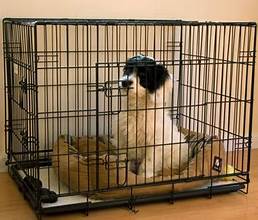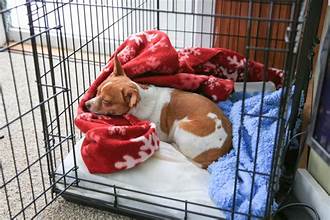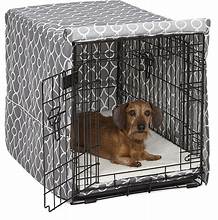Crate training is a valuable tool for dog owners, offering numerous benefits for pets and their families. When implemented correctly, a crate becomes a haven for your dog, aiding in-house training, reducing anxiety, and ensuring safety. Here’s a comprehensive guide to the benefits of crate training and practical tips for getting started.
Benefits of Crate Training
1. House Training Made Easier
Crates help dogs learn bladder and bowel control. Dogs instinctively avoid soiling their sleeping area, making establishing a consistent bathroom routine easier. By timing crate use with outdoor bathroom breaks, your dog quickly learns where it’s appropriate to go.
2. A Safe Space for Relaxation
Dogs are den animals by nature, and a crate replicates the sense of security a den provides. It’s a place where they can retreat to relax, decompress, or escape from household chaos.

3. Reduced Anxiety During Travel
Crate training makes traveling safer and less stressful. A crate provides a familiar environment in cars or planes, reducing anxiety and ensuring your dog’s safety during transit.
4. Prevention of Destructive Behaviors
When unsupervised, a crate keeps your dog safe and prevents destructive behaviors like chewing furniture or getting into hazardous items. Which is especially useful for puppies and high-energy breeds.
5. Facilitates Recovery Post-Surgery or Illness
Veterinarians often recommend limited movement during recovery from surgeries or illnesses. A crate ensures your dog stays safe and rests appropriately during healing.
6. Easier Adaptation to Boarding or Grooming Facilities
Crate-trained dogs are more comfortable in environments that require confinement, such as boarding kennels or grooming salons. Familiarity with a crate reduces stress in these situations.
How to Get Started with Crate Training
Step 1: Choose the Right Crate
Select an appropriately sized crate. Your dog should have enough room to stand, turn around, and lie down comfortably but not so much space that it can use one end as a bathroom.
Step 2: Introduce the Crate Gradually
Place the crate in a common area of your home and leave the door open. Encourage your dog to explore by placing treats, toys, or a soft blanket inside. Allow them to enter and exit freely to build positive associations.
Step 3: Make It a Comfortable Space
Add cozy bedding and safe chew toys. Avoid using the crate as punishment; it should always be a positive space where your dog feels secure.

Step 4: Use Positive Reinforcement
Always reward your dog with treats and praise when they enter the crate. Feeding meals inside the crate is another way to reinforce positive associations.
Step 5: Gradually Increase Crate Time
Start with a short crate time while you’re at home, gradually increasing the time as your dog becomes more comfortable. Stay nearby at first to reassure them.
Step 6: Establish a Routine
Incorporate crate time into your daily schedule, such as during meals, bedtime, or when you’re out of the house. Consistency helps your dog adapt to the routine.
Step 7: Avoid Prolonged Confinement
Never leave your dog in the crate for too long. Puppies can’t hold their bladder for extended periods, and adult dogs need regular exercise and social interaction.
Common Mistakes to Avoid
- Using the Crate as Punishment:
This creates fear and negative associations with the crate.
- Leaving Your Dog Too Long:
Prolonged confinement can lead to frustration and anxiety.
- Skipping Training Steps:
Rushing the process can make your dog resistant to the crate.
Final Thoughts
When done correctly, crate training is an invaluable tool that benefits both you and your dog. It provides a safe space, aids in-house training, and prevents destructive behaviors. With patience, consistency, and positive reinforcement, your dog will see their crate as a comforting retreat and an integral part of their routine.
Start crate training today and enjoy the peace of mind of having a happy, well-adjusted pet!





Pingback: A Unique and Versatile Breed: The Catahoula Leopard Dog - Positvley Pets